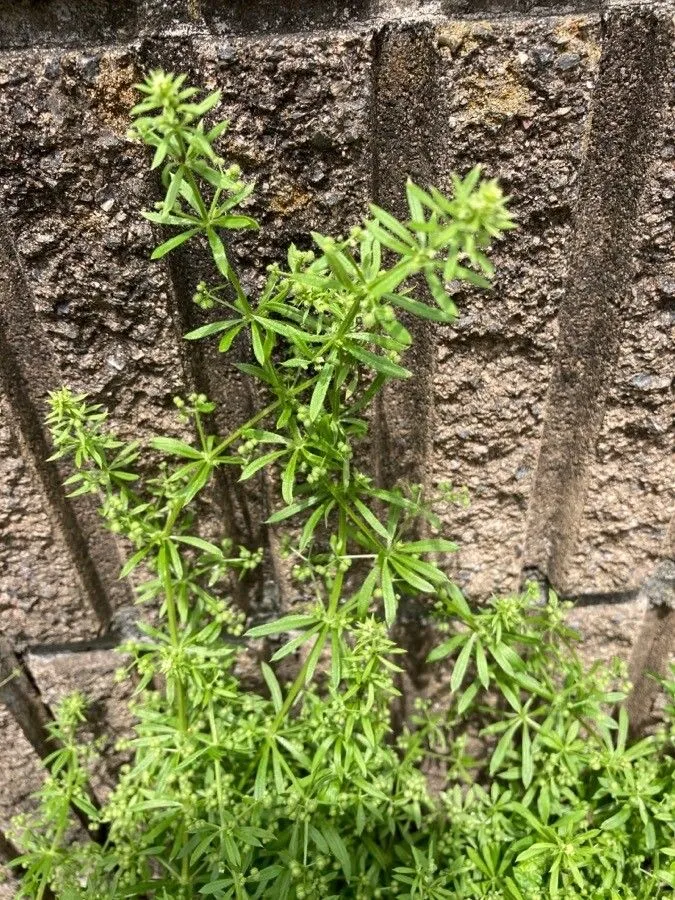
Author: L.
Bibliography: Sp. Pl.: 106 (1753)
Year: 1753
Status: accepted
Rank: species
Genus: Galium
Vegetable: Unknown
Observations: Temp. Northern Hemisphere to Africa
False cleavers, scientifically known as Galium spurium, is a fascinating member of the Rubiaceae family. This plant finds its origin in the esteemed text, “Species Plantarum,” authored by the renowned botanist Carl Linnaeus in 1753.
Galium spurium is widely distributed, showcasing a remarkable adaptability that allows it to thrive in temperate regions across the Northern Hemisphere, extending its reach all the way to Africa. This expansive habitat range speaks volumes about the plant’s resilience and versatile nature.
Characterized by its clinging nature, false cleavers often adhere to other plants or structures, maximizing its growth potential and spreading efficiently. This trait is facilitated by the small hooked hairs found on its stems and leaves, enabling it to latch on to various surfaces.
Botanically, false cleavers typically possess slender, square stems adorned with whorls of simple, slender leaves. The plant produces tiny, white to greenish flowers, which bloom modestly but contribute to its overall lifecycle and reproductive strategy.
The adaptability and widespread presence of Galium spurium make it a subject of interest not only for botanists but also for those interested in plant ecology and environmental studies. Understanding its growth patterns and interactions within various ecosystems can offer insights into the dynamics of plant competition, survival strategies, and habitat utilization.
In summary, false cleavers (Galium spurium) stands out as a resilient and adaptive species within the Rubiaceae family, with a broad geographical range covering numerous continents. Its unique clinging ability and modest floral display add to its distinctive botanical profile, making it an intriguing subject for further study and observation.
Deu: grünblütiges labkraut, saat-labkraut
Dan: hør-snerre
Eng: marin county bedstraw, false cleavers
Swe: linmåra, linmåra/småsnärjmåra, peltomatara
Fin: peltomatara
Nob: åkerklengemaure
Nno: åkerklengjemaure
Nld: akkerwalstro
Fra: gaillet bâtard
Cym: coeg-gynghafan, ffugwlyddyn
En: False cleavers, Marin County bedstraw
Da: Hør-snerre
Nl: Akkerwalstro
Fi: Peltomatara
Fr: Gaillet bâtard
De: Grünblütiges Labkraut, Saat-Labkraut, Acker-Labkraut, Falsches Kletten-Labkraut, Kleinfrüchtiges Klebkraut, Lein-Labkraut, Unechtes Labkraut
He: דבקה עדינה
It: Caglio campestre
Nb: Åkerklengemaure
Nn: Åkerklengjemaure
Sv: Linmåra, Linmåra/småsnärjmåra, Peltomatara
Cy: Coeg-Gynghafan, Ffugwlyddyn
Taken Apr 26, 2022 by 道草 (cc-by-sa)
Taken Apr 28, 2022 by 道草 (cc-by-sa)
Taken Apr 26, 2022 by 道草 (cc-by-sa)
Taken Apr 26, 2022 by 道草 (cc-by-sa)
Taken Apr 28, 2022 by 道草 (cc-by-sa)
Taken Mar 26, 2022 by 淳一 橘川 (cc-by-sa)
Taken Apr 28, 2022 by 道草 (cc-by-sa)
© copyright of the Board of Trustees of the Royal Botanic Gardens, Kew.
© copyright of the Board of Trustees of the Royal Botanic Gardens, Kew.
© copyright of the Board of Trustees of the Royal Botanic Gardens, Kew.
Family: Myrtaceae Author: (F.Muell.) K.D.Hill & L.A.S.Johnson Bibliography: Telopea 6: 402 (1995) Year: 1995 Status:…
Family: Rubiaceae Author: Pierre ex A.Froehner Bibliography: Notizbl. Bot. Gart. Berlin-Dahlem 1: 237 (1897) Year:…
Family: Sapindaceae Author: Koidz. Bibliography: J. Coll. Sci. Imp. Univ. Tokyo 32(1): 38 (1911) Year:…
Family: Asteraceae Author: A.Gray Bibliography: Pacif. Railr. Rep.: 107 (1857) Year: 1857 Status: accepted Rank:…
Family: Fabaceae Author: Medik. Bibliography: Vorles. Churpfälz. Phys.-Ökon. Ges. 2: 398 (1787) Year: 1787 Status:…
Family: Aspleniaceae Author: (Cav.) Alston Bibliography: Bull. Misc. Inform. Kew 1932: 309 (1932) Year: 1932…